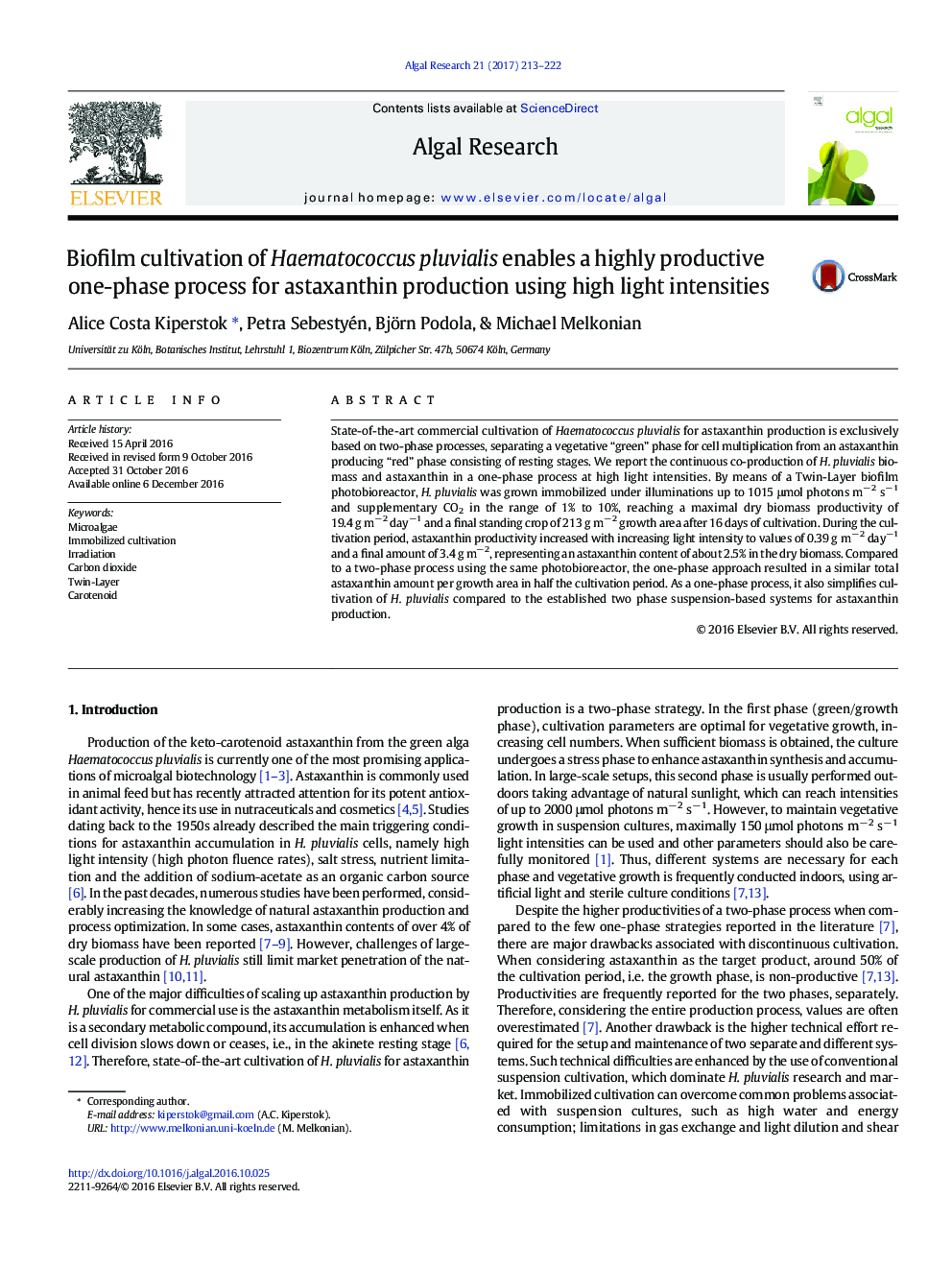| Article ID | Journal | Published Year | Pages | File Type |
|---|---|---|---|---|
| 5478511 | Algal Research | 2017 | 10 Pages |
Abstract
State-of-the-art commercial cultivation of Haematococcus pluvialis for astaxanthin production is exclusively based on two-phase processes, separating a vegetative “green” phase for cell multiplication from an astaxanthin producing “red” phase consisting of resting stages. We report the continuous co-production of H. pluvialis biomass and astaxanthin in a one-phase process at high light intensities. By means of a Twin-Layer biofilm photobioreactor, H. pluvialis was grown immobilized under illuminations up to 1015 μmol photons mâ 2 sâ 1 and supplementary CO2 in the range of 1% to 10%, reaching a maximal dry biomass productivity of 19.4 g mâ 2 dayâ1 and a final standing crop of 213 g mâ 2 growth area after 16 days of cultivation. During the cultivation period, astaxanthin productivity increased with increasing light intensity to values of 0.39 g mâ 2 dayâ1 and a final amount of 3.4 g mâ 2, representing an astaxanthin content of about 2.5% in the dry biomass. Compared to a two-phase process using the same photobioreactor, the one-phase approach resulted in a similar total astaxanthin amount per growth area in half the cultivation period. As a one-phase process, it also simplifies cultivation of H. pluvialis compared to the established two phase suspension-based systems for astaxanthin production.
Related Topics
Physical Sciences and Engineering
Energy
Renewable Energy, Sustainability and the Environment
Authors
Alice Costa Kiperstok, Petra Sebestyén, Björn Podola, Michael Melkonian,
